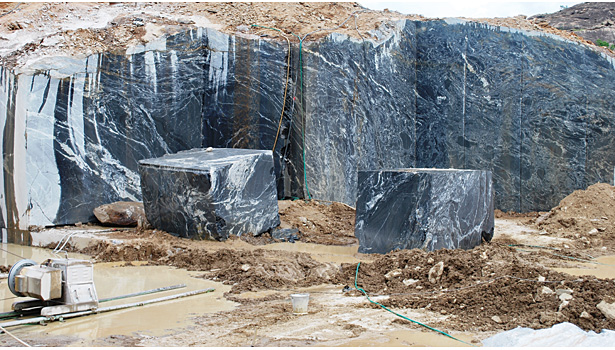Journeying With Granite Quarries in South Africa: A Visual Odyssey
Journeying With Granite Quarries in South Africa: A Visual Odyssey
Blog Article
Introducing the Mysteries of Granite Quarrying: Where Strength and Beauty Meet
The world of granite quarrying is a realm where the raw strength of nature assembles with human virtuosity to develop frameworks that stand the examination of time with an air of sophistication. From the midsts of quarries to the meticulous sprucing up in workshops, the procedure of transforming granite into building wonders is an intricate dance of practice and innovation. As we peer right into the depths of this old craft, we start to uncover the surprise complexities that shape the extremely significance of our constructed setting.
The Origins of Granite Quarrying
In the annals of architectural history, the origins of granite quarrying are shrouded in a tapestry of old craftsmanship and geological wonders. Going back to old Egypt and Mesopotamia, the extraction of granite from quarries noted the start of a trip that would eventually cause the development of a few of the world's most famous structures.
Granite quarrying's origins can be traced to the proficient craftsmens that acknowledged the stone's durability and visual appeal. Via a combination of primitive tools and sheer resolution, these early quarry employees uncovered granite blocks that would come to be the building blocks of human beings.
As people evolved, so did the techniques of quarrying granite. The Romans, renowned for their design expertise, developed innovative approaches for removing granite to build monuments, temples, and roadways that stood the examination of time.
The legacy of these old quarrying practices continues to form contemporary style, with granite continuing to be a symbol of stamina and elegance in construction projects around the globe. (granite quarries in south africa)
Tools of the Quarrying Trade
The evolution of granite quarrying strategies from ancient worlds to modern times highlights the critical role played by the devices of the quarrying profession in shaping the sector's techniques. In old times, quarrying tools were primary, often including blades, hammers, and wedges made from materials like bronze or iron. These devices called for considerable workforce and time to essence granite blocks from quarries.

In addition, the intro of pneumatic tools and high-powered equipment has actually significantly decreased the physical labor required in quarrying operations, enhancing worker safety and security and productivity. As the quarrying sector remains to innovate, the devices of the trade remain at the forefront of driving progress and shaping the future of granite removal.
Removing Blocks of Granite
Utilizing accuracy machinery and progressed strategies, the removal of granite blocks from quarries has actually come to be an advanced procedure in the contemporary quarrying sector. The initial action includes recognizing the area and dimension of the granite deposit to determine the most efficient extraction method. As soon as an appropriate site is chosen, the extraction process begins with the exploration of holes for the placement of dynamites. Regulated blasting strategies are then employed to break apart the granite right into convenient areas.

Polishing and Finishing Techniques
To accomplish a remarkable surface area on granite blocks, experienced craftsmens utilize a collection of thorough polishing and ending up methods. After the preliminary removal and forming procedures, the granite blocks undertake a complete polishing stage to enhance their all-natural elegance and resilience. One typical technique utilized in brightening granite is diamond abrasion, where industrial diamonds are used to grind and brighten the rock to a smooth surface. This procedure not just produces a shiny surface area yet also ensures uniformity in color and appearance throughout the granite block.
Along with sprucing up, ending up techniques are put on more fine-tune the granite's appearance. These techniques might include flaming, honing, or cleaning, each offering distinct structures and coatings to suit various aesthetic preferences. Flaming, for example, involves revealing the granite surface to heats to develop a rough, distinctive finish, ideal for outside applications where slip-resistance is essential. Refining, on the various other hand, offers a matte finish that is smooth to the touch, perfect for indoor kitchen counters and read this floor covering. By thoroughly choosing and using these polishing and finishing techniques, artisans can change raw granite blocks right into elegant pieces that display both stamina and sophistication.

Ecological Effect and Sustainability
With the growing focus on environmental consciousness in the sector, granite quarrying techniques are significantly scrutinized Visit This Link for their impact on all-natural resources and long-term sustainability. Quarrying for granite can have significant environmental ramifications. The removal process typically entails making use of hefty equipment, explosives, and large amounts of water, resulting in environment devastation, dirt erosion, and water contamination. In addition, the transportation of granite from quarries to refining centers creates carbon exhausts, even more adding to ecological deterioration. granite quarries in south africa.
To alleviate these influences and guarantee sustainability in granite quarrying, industry stakeholders are taking on different steps. Executing innovative innovations to minimize energy intake and water usage, redeeming quarried land for environmental repair, and advertising accountable sourcing methods are some techniques being used. Moreover, qualifications such as the Forest Stewardship Council (FSC) and the Management in Power and Environmental Design (LEED) aid customers identify eco-friendly granite items.
Final Thought
In final thought, granite quarrying is a process that calls for specialized tools and techniques to essence blocks of granite and brighten them to a high degree of finish. While the ecological influence of quarrying can be substantial, initiatives are being made to improve sustainability methods in the industry. In general, granite quarrying is a delicate equilibrium between taking go to this site advantage of the strength and sophistication of this all-natural stone while decreasing its effect on the atmosphere.
Report this page